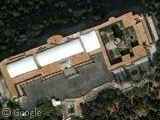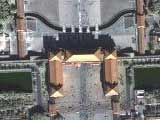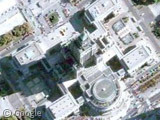The polluted city of Norilsk, Siberia
Monday, 19th October 2009 by Daniel Chapman
New writer: Daniel Chapman Daniel recently graduated from the University of New Orleans with a degree in urban planning but grew up in the UK. He is currently planning to move to Mexico to teach English before beginning his real career of championing intelligent city design.
The city of Norilsk lies 320km north of the Arctic Circle in the frigid tundra of Siberia. It is the second largest city north of the Arctic Circle (after Murmansk), and the northernmost city in the world with a population over 100,000. It also holds an unenviable spot among the ten most polluted cities on earth thanks to the massive nickel mining operation in the area.
Due to pollution, not a single tree grows within 45km of the largest of four nickel smelters, Nadezhda1, and it's estimated that Norilsk contributes 1% of all sulphur dioxide released into the earth's atmosphere.
The city itself was built with Gulag labour under the direction of Joseph Stalin, and in true Stalinist fashion, the cityscape is dominated by massive apartment blocks spaced along wide boulevards.
In 1953-54, prison labourers assigned the task of building the city staged what has become known as the Norilsk uprising. The "uprising" was actually unarmed, so the term settled upon by the authorities was "mass insubordination". While dissent was common in the Gulag system, the uprising in Norilsk was the largest such rebellion under Stalin's iron-fisted rule.
Many thousands of prison labourers died in the extremely harsh conditions while building the city: Norilsk is covered by snow between 250 and 270 days a year with temperatures as low as -58°C having been recorded.
After reading all this, you're probably about ready to book your next holiday to this lovely utopia. Not so fast. Norilsk is closed to foreigners without a really good reason to go, and travel to the city is restricted even among Russian nationals. The reason for this could be to cover up the massive scale of pollution, or it could have something to do with the many ICBM silos nearby. Any other theories?
There's more information about Norilsk at Wikipedia.
-
"Nadezhda" means "hope" in Russian. ↩︎






Great first post! I hope there comes more of that stuff. And especially hope that you can keep the daily posts again 🙂
Impressive – keep the good work up, Daniel! I found a video on Youtube that gives you a feeling of what life must be like for those poor people living there: http://www.youtube.com/watch?v=mWbdIfvtpdg&feature=player_profilepage
here’s a bit of BIG mine
https://www.googlesightseeing.com/maps?p=&c=&t=h&hl=en&ll=69.281701,88.173866&z=14
and some image weirdness
https://www.googlesightseeing.com/maps?p=&c=&t=h&hl=en&ll=69.275111,87.968903&z=12
(and also some snow)
https://www.googlesightseeing.com/maps?p=&c=&t=h&hl=en&ll=69.335107,87.886505&z=13
I couldn’t find the ICBM’s myself – but this lake doesn’t look very healthy
https://www.googlesightseeing.com/maps?p=&c=&t=h&hl=en&ll=69.386357,88.107948&z=13
An excellent post!
Not to in any way discount the environmental damage being done there, nor to disparage the veracity of CNN (snicker), but I find it hard to believe that no trees grow within 45km (or 48km as the Wikipedia article quotes CNN as saying) of this place. A quick look here: View Placemark (69.4821,88.3751) shows trees in abundance, less than 20km from Norilsk. Looking at some of the Panoramio photos taken in the area, one also sees many apparently healthy trees. (I know that photos sometimes get placed incorrectly, but there are many, many photos showing trees.) Lots of other photos show no trees, but it is frozen tundra, after all. This photo: http://www.panoramio.com/photo/12857196 apparently taken in the nearby city of Talnakh (~19km NE of Norilsk), shows trees in the foreground, and a forest in the background. Perhaps the dead trees are only in the direction of the prevailing wind?
If you look more west you find the pink city of Kayerkan! 😉 Why are the pictures blurred?
It’s Nadezhda, not Nadezhga
Thanks sendmoreinfo, now fixed.